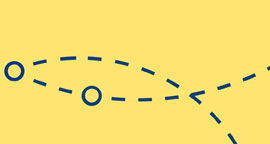Centre for Contemporary Culture at Palazzo Strozzi
Palazzo Strozzi
Nick Cave

Nick Cave’s Soundsuits are colorful and extravagant “wearable sculptures” that the artist also uses as costumes for his performances. Thanks to their different material, they become an instrument for a multisensory experience in the amplification of the movement and for the creation of unexpected sound effects.
Warning: A non-numeric value encountered in /var/www/vhosts/strozzina.org/httpdocs/admin/wp-content/plugins/lightbox-gallery/lightbox-gallery.php on line 443
- Exhibition view "American Dreamers", CCC Strozzina, Palazzo Strozzi, Firenze - Nick Cave, Various works, Courtesy the artist and Jack Shainman Gallery, New York (photo: Martino Margheri)
- Exhibition view "American Dreamers", CCC Strozzina, Palazzo Strozzi, Firenze - Nick Cave, Soundsuit (2011) and Mating Season (2011), Courtesy the artist and Jack Shainman Gallery, New York (photo: Martino Margheri)
- Exhibition view "American Dreamers", CCC Strozzina, Palazzo Strozzi, Firenze - Nick Cave, Soundsuit (2010) and Soundsuit (2011), Courtesy the artist and Jack Shainman Gallery, New York (photo: Martino Margheri)
- Exhibition view "American Dreamers", CCC Strozzina, Palazzo Strozzi, Firenze - Nick Cave, Soundsuit (2011) and Mating Season (2011), Courtesy the artist and Jack Shainman Gallery, New York (photo: Martino Margheri)
- Exhibition view "American Dreamers", CCC Strozzina, Palazzo Strozzi, Firenze - Nick Cave, Various works, Courtesy the artist and Jack Shainman Gallery, New York (photo: Martino Margheri)
- Exhibition view "American Dreamers", CCC Strozzina, Palazzo Strozzi, Firenze - Nick Cave, Soundsuit, 2010 (detail) Courtesy the artist and Jack Shainman Gallery, New York (photo: Martino Margheri)
The transformative role art plays is at the heart of Nick Cave’s work. His works are wearable sculptures made of a wide range of materials including sequins, buttons, fake fur, children’s toys, human hair as well as other found objects. Created in a dimension between sculpture, performance art and contemporary dance, the suits take on a shape modeled after the form of the artist’s body. When used as performers’ costumes, the Soundsuits create music, producing different sounds based on the varying materials they are made out of.
As with most of the artists featured in the exhibition, Cave’s artistic research is based on the employment of humble material from everyday life. Fueled by the imaginative power of an artistic gesture, the objects are transformed into what the artist calls a “psychedelic freak show” and carry a great sense of primordial energy. Arranged in groupings that gain power with their number and diversity of forms, his sculptures are silent and still when in a gallery setting, contrasting greatly from their effect when put into motion. As immobile forms that are slightly larger than human scale, the Soundsuits are both strange and wonderful as, even in their stillness, they appear both threatening and fantastical.
Cave’s work is influenced by different references ranging from the role of the mask in African and Caribbean cultures, to the costumes and language of expressionistic avant-garde theatre, along with inspirations from what is known as “social sculpture” with artists like Joseph Beuys and Niki de Saint Phalle that believed that an artist needed to rethink his role within society and that art should be treated as an act more than a material object. The carnivalesque forms of Cave’s suits also evoke such traditional American celebrations as the New Orleans Mardi Gras Parade, which relies on elaborate costumes that are typically built by local groups and reflect a strong sense of regional identity.
By providing a physical covering, the Soundsuits neutralize the gender, age, race and class of the wearer, alluding to the symbol of the mask as a tool for protection. The artist as activator is transformed into an archetypal figure. Cave goes beyond his own individuality and projects himself and his viewers towards a greater dimension, inducing a new sense of liberty and a reflection on the value of imagination in those who experience his works.
Nick Cave (1959, Fulton, MI, USA; lives and works in Chicago, IL) is professor and chair in the Fashion Department at the School of the Art Institute of Chicago where he teaches in the Fiber Arts Program. He has led numerous workshops on various topics, such as Extending the Body: Experiments in Clothing and has designed, manufactured and marketed his own line of men’s and women’s clothing and ran a successful clothing company in Chicago. Cave has received numerous awards including the United States Artist Fellow Award (2006), Joyce Award (2006), Artadia Award (2005), Creative Capital Grant (2005, 2004, 2001), Louis Comfort Tiffany Foundation Award (2001) and National Endowment for the Arts (1991). He studied at the Kansas City Art Institute and in 1989 he earned his MFA at the Cranbrook Academy of Art in Bloomfiels Hills, Michigan. Recent collective exhibitions include: (2010) Disidentification, Göteborgs Konsthall, Svezia; Dead or Alive, Museum of Arts and Design, New York; Pattern, Costume, and Ornament in African and African-America Art, Birmingham Museum of Art, Birmingham, AL; Hand + Made: The Performative Impulse in Art and Craft, Contemporary Arts Museum, Houston, TX; Resurrectine, Ronald Feldman Gallery, New York; Call and Response: Africa to America, Halsey Institute of Contemporary Art, Charleston, SC; The Figure: Contemporary Works from the Collection, Rhode Island School of Design Museum, Providence, RI; Now What?, Norton Museum, Miami, FL; The Global Africa Project, Museum of Art and Design, New York; (2011) Go Figure, Smart Museum, University of Chicago, IL; Are You A Hybrid, Museum of Arts and Design, New York; Pandora’s Box: Joseph Cornell Unlocks the MCA Collection, Museum of Contemporary Art, Chicago, IL. Recent solo shows were held at (2010) Nerman Museum of Contemporary Art, Overland Park, Kansas; Studio La Città, Verona; (2011) Jack Shainman Gallery and Mary Boone Gallery, New York.












